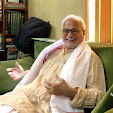The Ontic Principle’s Tangled Beard
from Larval Subjects by larvalsubjects
I will, however, say that one of the things I’m trying to accomplish at the level of social and political theory is, following Latour, the introduction of non-human actors into social networks. In my view, a good deal of social and political thought suffers from flawed assumptions at the level of social ontology. The field gets restricted to human beings, discourses, signifiers, language, ideas, norms, etc., and the non-human is set aside and treated as something outside of or other than the social. Following Latour, my thesis would be that the inhuman is an actor in the social as well, and that the social cannot be adequately thought without taking into account non-human actors.
I learned of a good example non-human actors play in social assemblages or networks as an undergrad in a course entitled Nature, Technology, and Culture. There the professor discussed a city where the bridges between the North and South side were built too low for the public buses to pass through. This simple fact contributed a major difference in both income distribution and cultural distribution in the city, as those who were from the South side of the city could not readily travel to the North side of the city where many of the jobs were. In addition, this difference, the bridge, had both catalytic and de-catalytic effects in the sorts of human networks formed. By virtue of this lack of ready transportion between the North and South sides, networks among humans became restricted to these particular regions, leading these networks to become self-reinforcing of particular relationships. In this example, the simple height of the bridge would be a non-human actor within the social assemblage. It will be objected that the bridges were built by human hands, that they would not exist without humans, and this would be true. However, the key point is that the difference introduced by the height of the bridges was not– as far as we know –intended to produce this difference.
Similarly, we have completely inhuman actors that play a significant role in processes of social assembly. Thus, for example, what role does the disappearance of Lake Chad, an inhuman entity, play in the process of assembly for human relations in Africa? Lake Chad is an inhuman actor that certainly plays a significant role in how life is organized among people in this region. Through the role of this actor, people are led to relate to the land differently, each other differently, occupations differently, and perhaps even their cultural beliefs differently. As a result of the way in which this lake acts, all sorts of translations must take place among the people in this vicinity.
In short, my thesis would be that the social is composed not of what is human, but of the inhuman and human alike. Once again, following Latour, this leads to a significant transformation of our understanding of the social. The social is not a distinct substance in opposition to, say, the natural or the psychological. Rather, the social now refers to associations. Following Whitehead, the social will thus refer to any form of association, whether completely inhuman or involving combinations of the human and the inhuman. What will be of interest in a social theory is how these association are made and remade. As Latour dramatically puts it, “the social does not explain but must be explained”…
No groups only group formations. The point that inhuman actors play a significant role in human social formations might appear trite and obvious– and it really should be –but when confronting a world of social and political theory that seems to focus almost entirely on the discursive, the symbolic, and the normative, it is, I think, a tremendously important point to make. So long as these inhuman actors are not included in associations or assemblages, I just don’t see how we can pose the right sort of questions. George Bush states the terrorists are out to get us because they hate our way of life, i.e., culture is to explain it all. There are no small number of theorists who make similar claims in much more elaborate and sophisticated vocabularies. The point is not that culture, language, signs, history, etc., do not make a difference, but that we must also think these differences in their relation to inhuman differences.
***
- Justice, Nature and the Geography of Difference by David Harvey
- Readings in the Philosophy of Technology by David M. Kaplan - In his consideration of another thing, a bridge, Heidegger notes the human ways and works that are gathered and directed by the bridge.
- Social Philosophy of Sri Aurobindo and the New Age by Kishor Gandhi
- The Second World: Empires and Influence in the New Global Order by Parag Khanna

No comments:
Post a Comment